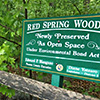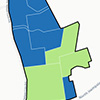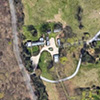Two landowners passed over for open space purchases
The operators of long-standing Nassau businesses expressed willingness to sell their properties, but the county chose other locations.
One is a chicken farmer. The other was a clammer.
Each ran his long-standing family business at Nassau County’s poles: Lattingtown on the North Shore and Point Lookout along the South Shore.
And each once had interest, they said, in selling their properties to the county for preservation.
But under the county environmental bond programs, neither made the cut for receiving some of the $100 million that was dedicated to open space acquisitions.
Just why remains a matter of dispute. But both landowners — Eddie Armstrong of Armstrong Farm and Bob Doxsee Jr. of the former Doxsee Clams — were not connected in the way several sellers were, either as regular political contributors (they have combined to give $150 since 2006, none to a county office holder) or through ties to the advocacy group that pushed for many of the properties.
“I came out feeling like they didn’t want me,” said Armstrong, 83, who sells eggs from the roughly 500 chickens he raises on his Lattingtown property, a former dairy farm. “It takes the wind out of your sails.”
After the two bond acts passed in 2004 and 2006, more than 200 properties were nominated for preservation. An advisory committee of environmentalists, civic leaders and political appointees ultimately recommended about three dozen for purchase, including Armstrong’s eight-acre property and Doxsee’s half-acre parcel along Reynolds Channel.
They were among the 13 properties nominated by the bond act advisory committees that weren’t purchased.
Some, like an old power plant site in Glenwood Landing and land held by a private water company in Roosevelt that had been envisioned for a park, were simple cases of the owners being unwilling to sell, while sale of a former manufacturing site in Port Washington North fell through when a partnership with the village and North Hempstead Town broke down. A 40-acre site in Old Westbury, once owned by the Solomon Schechter Day School, had just been sold to a developer months before the county funding came through.
Why the Armstrong and Doxsee deals never materialized depends on whom you ask.
Armstrong’s land in bucolic Lattingtown village sits on the Special Groundwater Protection Area and abuts an existing nature preserve, much like the pieces of North Shore estates that the county prioritized. But Armstrong said he never felt as if the county was serious about buying his land for open space.
“They didn’t try very hard,” he said.
His property was recommended for purchase by the county advisory committees in both 2006 and 2007. But Armstrong said officials never made him an offer.
He said he recalled attending a meeting in Mineola, when officials first announced sites that had been recommended for purchase. He said then-County Executive Thomas Suozzi also once talked to him.
“Then nothing happened.”
Suozzi, a Glen Cove Democrat who now represents the 3rd Congressional District, declined to comment on specific transactions. But Lisa Ott, a member of the bond act advisory committee and president and CEO of the North Shore Land Alliance — the nonprofit that was the driving force behind many of the open space deals — disputes Armstrong’s recollection.
“We tried so hard on that one but Eddie Armstrong was just bound and determined,” Ott said.
She said Nassau was primarily interested in buying development rights to the six open acres of Armstrong’s land behind his chicken farm, but Armstrong said no to those terms.
Later, when Armstrong was more interested in the county’s proposal, Ott said, “there wasn’t enough money left.”
Armstrong said he recalls being told there wasn’t money left, but disputes that there was ever a point where he wasn’t interested, or interested only in a transaction the county didn’t want.
“No, I was always really interested,” he said in response. “They never offered me anything.”
Doxsee also said the county never engaged in strong negotiation.
At just a half-acre, his property overlooking Reynolds Channel in Point Lookout was one of the smallest parcels recommended for preservation. But it was zoned for as many homes as a 25-acre site in Mill Neck, owned by a Suozzi campaign contributor, that the county purchased for $8 million.
Its history as home to a beloved clamming business for more than 75 years also had many convinced of its worth, perhaps as a museum.
“I was disappointed,” Doxsee, 87, said in an interview. “I was open to it.”
Superstorm Sandy in 2012 ravaged what remained of Doxsee’s business, and he went on to sell the land to developers, who have since put up three single-family homes with backyard bay access.
“I guess it wasn’t a priority,” said County Legis. Denise Ford, a Long Beach Democrat who caucuses with Republicans, who had nominated the property for purchase. “It didn’t work and it was a heartbreak for me.”
She said she didn’t know the precise reason the property was never strongly pursued but said she suspected that the Suozzi administration was “trying to get the most for the money they were spending,” and focused on larger North Shore parcels.
Ott said she “wasn’t really involved” in negotiations for the Doxsee site. She recalled that “it was really supported by the community” and said she thought that the county “just couldn’t strike a deal.”
Still, Ford said it was disappointing that Doxsee did not get stronger consideration, seeing how little of the land preserved was in central Nassau or on the South Shore.
Nearly 95 percent of the roughly 300 acres preserved under the program was on the North Shore, where most of the available land is located.
“When you look at it, it was an unequal distribution of the money, in my mind,” Ford said.

 Overview:
Overview: Map:
Map: Part 1:
Part 1: Part 2:
Part 2: Part 3:
Part 3:


 Video:
Video: